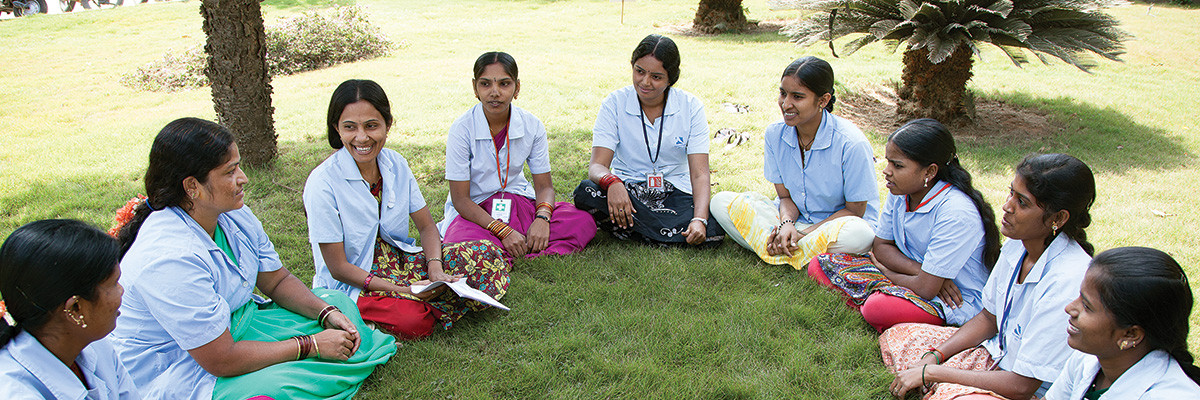
Authors
-
Elissa Goldenberg
Former Manager, BSR

Twenty men and women enter the training hall from the factory floor. Each of them carries a set of index cards with goals written on one side: send my children to school, buy a house, start a business, pay for house repairs. On the other side, there’s a value and a timeframe: Rs 2,000 and two weeks, Rs 50,000 and six months, and Rs 100,000 and three years.
These cards will help the participants create a savings plan. But they also represent aspirations—better living conditions, freedom from financial stress, the ability to start a business—that participants may not have imagined possible in the past.
The scene above is from a training I observed in New Delhi last year as part of BSR’s HERfinance program, an initiative that aims to build the financial capability of low-income workers in global supply chains. HERfinance delivers workplace-based financial education programs and connects factory employees to appropriate financial services. We’ve been piloting the program in India for the past 16 months, and we are currently active in 11 factories, reaching nearly 10,000 men and women.
A critical component of the program is our financial education curriculum, which we are excited to launch officially today. Developed with funding from the Walt Disney Company, the curriculum is designed to address the financial needs of low-income salaried workers—a segment of the population that is often excluded from traditional financial education campaigns.
The curriculum contains modules on six financial topics: introduction to financial planning, budgeting, savings, borrowing responsibly, talking about finances with family, and local financial products and services. BSR and Women’s World Banking conducted an in-depth research study on the financial needs of factory workers, interviews with financial literacy experts, and reviews of existing financial education materials to develop the curriculum topics and key messages.
Along with the HERhealth Curriculum, HERproject now offers a range of tools that companies can use to invest in their workforce. The tools are designed for a workplace setting. Training guides are 60 to 75 minutes in length and focus on reinforcing key messages through a range of participatory activities. Step-by-step instructions make it possible for less experienced trainers to understand and implement the program, and companies can easily integrate the content into existing training programs and develop a program that works for their unique context. And the tools shouldn’t be limited to the workplace—community-based organizations and schools can also benefit from the short training timeframe and simple messages.
After almost a year and a half of working on this curriculum with experts and our local partners—revising the messages, testing the activities, and then revising some more—my proudest moment was seeing the trainings come to life in India. Participants were eager to ask questions and participate in the role-play activities. Women—who may not have ever spoken up before about their finances—were eagerly asking questions about local savings options. Men and women gathered together to discuss the differences between their short-term and long-terms savings goals and how to prioritize them. And all participants shared how they started talking about their budgets with their families, which was the topic of the previous lesson.
While it may be too early to say exactly how many participants will start a savings account or reduce their dependence on exploitive moneylenders, it was clear that the men and women in the room now had the knowledge and tools needed to make informed financial decisions and take control of their financial futures.
Visit our website to download the HERfinance Curriculum for free (after registering). The curriculum would not have been possible without contributions from Better Work, the Indian School of Microfinance for Women, Microfinance Opportunities, and Women’s World Banking.
Let’s talk about how BSR can help you to transform your business and achieve your sustainability goals.